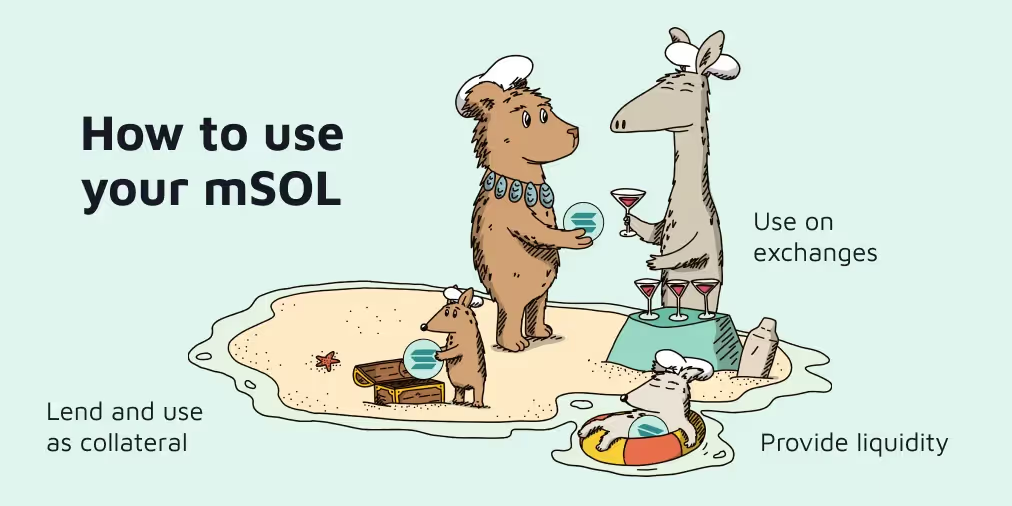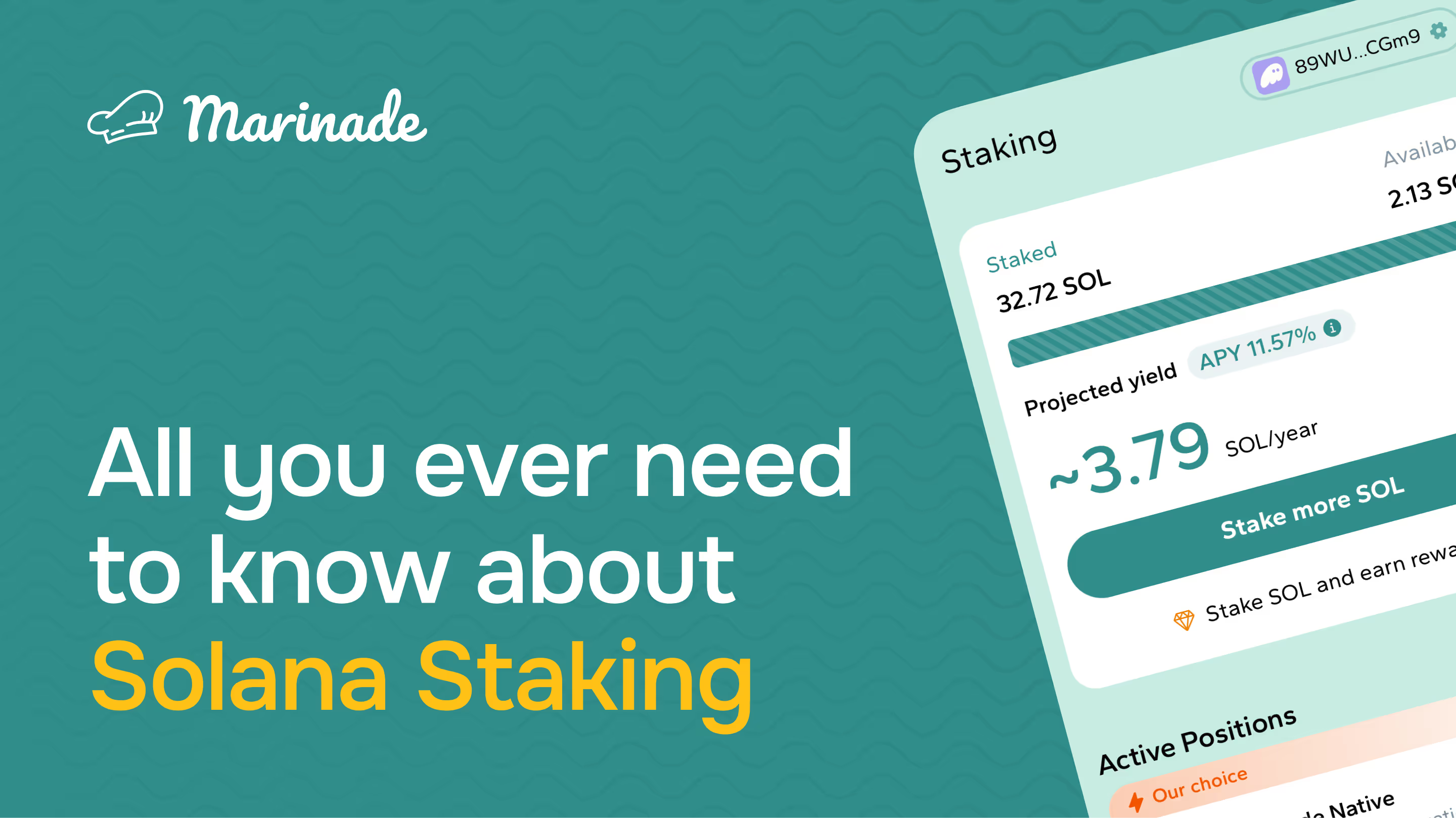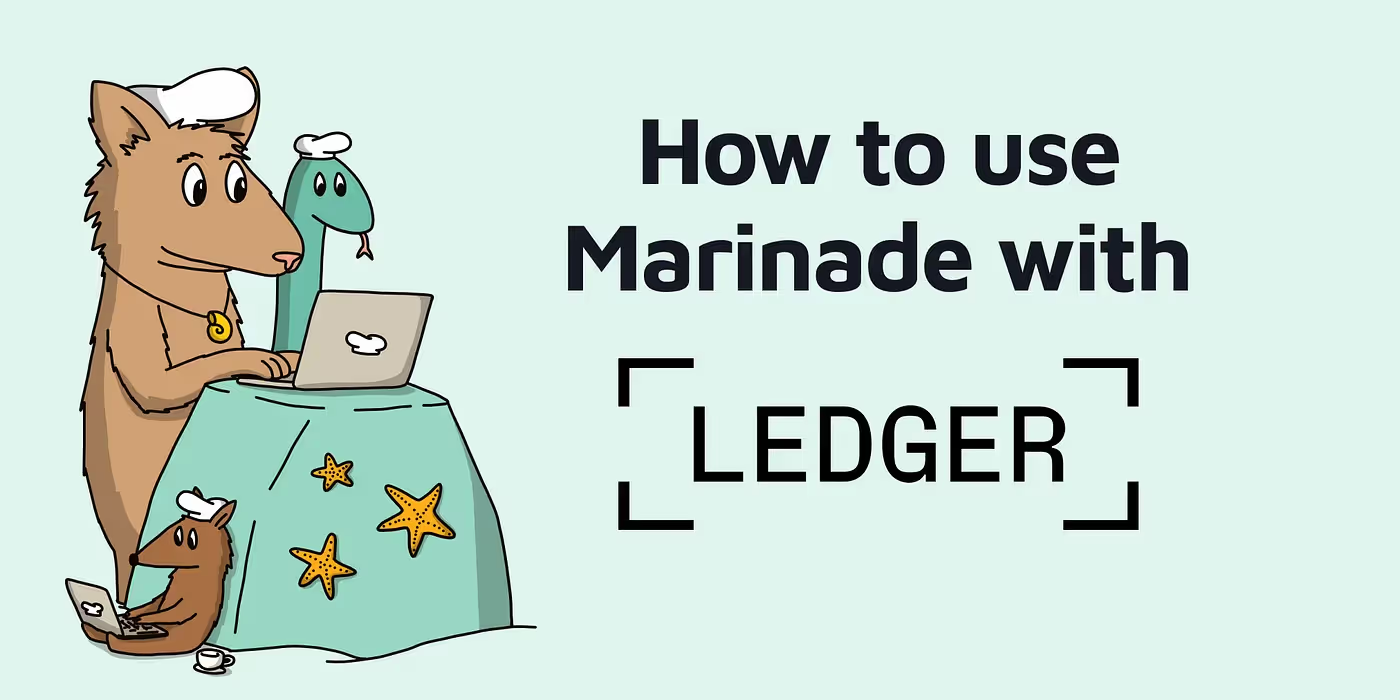mSOL 101: How to get started with liquid staking on Solana
Solana’s SOL token has enjoyed a wide adoption throughout crypto since its launch thanks to its ease of use, its expanding utility and growing ways to earn yield.

mSOL unlocks the magic of the Solana DeFi ecosystem.
Solana’s SOL token has enjoyed a wide adoption throughout crypto since its launch thanks to its ease of use, its expanding utility and growing ways to earn yield.
There are now over 300 million SOL tokens in circulation and if you’ve found this blog, chances are you own a little piece of SOL in a centralized exchange or in a Solana-compatible wallet.
If you’re planning to hodl SOL, it makes sense to earn staking rewards while doing so. And to do this, staking them is the first step. Solana is a proof-of-history blockchain that relies on validators to confirm transactions and provide censorship resistance. Solana ranks among the most widely-staked blockchains because the transaction fees to do so are minuscule and the yield is very good.
If you’re not staking your SOL, you’re not contributing to the decentralization and long-term value of the Solana tokens you are hodling!
So staking is a good idea. But here’s where it gets really exciting: Liquid Staking. Traditional staking requires your tokens to be “locked.” The staker has full custody of your tokens, and in order to get them back, you must wait until the end of the next epoch (2–3 days) when they will be released to you along with the additional SOL tokens you earned while staking them.
But Marinade’s innovative liquid staking simultaneously unlocks the world of DeFi all while your SOL tokens are staked and earning staking rewards.
Sound too good to be true? It’s not! Let’s explain.

How to liquid stake SOL tokens for mSOL at Marinade
Liquid staking with Marinade is simple: deposit your SOL tokens at Marinade.Finance. Marinade will stake them for you and your tokens will grow over time at about 6.2% APY (the staked SOL rewards will auto-compound). Here’s where it gets better: While Marinade stakes your SOL, they provide the staker mSOL in return. mSOL is a collateralized version of SOL that is widely accepted across the Solana ecosystem.
The long-term goal of Marinade is to make mSOL the unit of account across Solana instead of SOL tokens. This is a shared goal across Solana because the Marinade delegation strategy improves the blockchain’s censorship resistance. The. more mSOL, the more secure Solana will be. So the greater Solana ecosystem is rapidly working to integrate mSOL in some fashion. (Check out the Marinade roadmap for 2022 that explains this in more detail.)
Some of the guests we’ve had on our AMA have had this to say about mSOL:
“mSOL is probably the most productive asset within Friktion Volts right now. It doesn’t just earn yield in other places but it also decentralizes the network and distributes in that sense. mSOL is well positioned as one of Friktion’s largest assets.” — Friktion Labs, Marinade AMA, January 2022
Proof-of-stake blockchains like Solana rely on validators to confirm transactions. These validators are awarded tokens for their service. But in order for them to receive transactions to validate, token holders must stake with them.
Here are just a few possibilities for how you can begin to use mSOL to get the absolute most out of your crypto. * *The following is not financial advice and meant for educational purposes only. None of these methods should be considered endorsements by Marinade.
Step 1: How to earn SOL staking rewards with mSOL tokens
Once you have moved SOL tokens off a centralized exchange and in a crypto wallet like Solflare or Phantom, it’s this easy to begin earning:
And that’s it! mSOL tokens are deposited to your wallet which you can view and use. Your staked SOL will safely and instantly accrue compounded staking rewards in Marinade’s stake account at just over 6% APY. You can unstake the SOL at any time for a small fee or wait until the next epoch ends for no fee (2–3 days).
You can view the new Marinade staking rewards estimator in the app to see the expected accrual for your SOL tokens over time.
View your estimated SOL stake earnings at Marinade.Finance
If you stop right here, you’re not making the most out of liquid staking’s ability for “double dipping” at Marinade.
Step 2: How to use mSOL in Solana DeFi
To earn beyond the stake account, the next easiest thing to do is to find a single-sided staking or farming option that accepts mSOL. For example, at Marinade.Finance, click on the MNDE tab and you can farm mSOL for MNDE tokens. MNDE is the governance token of Marinade and can soon be locked to have governance rights at Marinade and also receive a unique NFT.
If you’d prefer to farm other tokens in a single-sided pool, visit the Marinade DeFi page, which has a collection of options from protocols that have integrated mSOL. Protocols like Raydium, Orca, Larix and Sythetify allow users to farm mSOL for their native Solana ecosystem tokens.
You can sort each column of our DeFi (Pair, TVL, APY, and Provider) to see which pool matches your positions and goals. Hover over each APY’s info icon for details to see which tokens you will be farming.

Single-sided pooling of tokens carry relatively little risk: mainly the security of the protocol your tokens are being held, and the fluctuating value of the tokens you are farming.
Earning yield by liquidity pooling with mSOL pairs
Liquidity pairs help trading or lending platforms like AMM’s (Automated Market Makers) provide asset liquidity. They offer liquidity on a variety of crypto assets from stablecoins to specific tokens to serve their market. More and more of these protocols are integrating mSOL.
You can see a growing list of liquidity pairs on the Marinade DeFi page. Sort these pairs by the pair, APY, TVL or provider to see which pair is right for your portfolio.

Sort pairs by APY on the Marinade DeFi page
Be advised: liquidity pools often promote a higher APY, but the real returns can fluctuate widely based on liquidity needs. Providing liquidity to an AMM pool across a pair of assets can also be subject to impermanent loss. Impermanent loss refers to a decrease in the value of your pooled asset pair compared to if you’d just held the assets in your wallet. This arises from shifts in the overall balance of tokens in a liquidity pool or DeFi application. Large price swings can cause liquidity providers to lose money and you should take care to understand the balance of LP rewards vs. impermanent loss potential over time. Learn more about Impermanent Loss before you add liquidity pairs.
Other methods to earn in DeFi with just mSOL
More and more DeFi protocols are launching on Solana with automated or algorithmic yield and trading strategies. Consider Friktion Vaults. They provide straightforward structured products in the options space, based around automated “Call” and “Put” strategies. They offer a “Covered Call” product for several tokens including mSOL, allowing you to earn yield by giving up a portion of the upside should the mSOL price appreciate. You can visit Friktion’s docs to learn more about what a “Covered Call” is and if it’s right for your investment portfolio.
Advanced DeFi strategies with mSOL
We’ve outlined some basic ideas to help you get started with double-dipping mSOL. But browse Reddit boards, YouTube, Twitter threads and newsletters, and you will uncover some very creative DeFi users that share more complicated strategies. These include bridging tokens between Layer-1 blockchains, borrowing additional mSOL at lower interest rates to take advantage of higher rewards and even more complex leveraged strategies involving “looping.” Do not implement any of these strategies until you have a firm understanding of them and of the risks associated. DYOR!
Returning mSOL to claim SOL tokens
Once you decide to claim your SOL tokens from the Marinade stakepool, you will need to take your mSOL out of whatever strategy it is in and return it to your wallet. Then, visit Marinade, connect the wallet your mSOL is in and click “unstake.” You can unstake instantly for a fee or wait until the next epoch end for no fee. When you unstake, you will see the SOL will have grown in size compared to when you originally staked it based on how long it was staking. And that’s in addition to whatever tokens you accrued while using mSOL in DeFi!
Be advised, if at any point, you decide to trade your mSOL for another asset, the other party will then own the mSOL.
That’s all there is to it! You are welcome to join the Marinade Discord and chat with Marinators and other DeFi users about the best ways they are cooking up mSOL strategies. Be sure to share your recipe with your fellow Marinators by tagging us on Twitter or sharing in Reddit or Discord!
Solana tastes better with Marinade, so enjoy cooking with mSOL!
About Marinade
Marinade.Finance is the first non-custodial liquid staking protocol built on Solana. Stake your SOL tokens with Marinade and receive mSOL (“marinated SOL”) tokens in return that can be used in decentralized finance (DeFi). mSOL is the most widely integrated collateralized version of SOL. The price of mSOL goes up relative to SOL each epoch, with rewards being accrued into your stake account.
Marinade’s delegation strategy stakes to 400+ validators that are selected automatically by an open-source, fair formula based on performance, commission, and decentralization.
Marinade includes mSOL->SOL swap, so you can “Unstake Now” and receive your SOL immediately for a small fee. You can also directly exchange between mSOL and SOL on secondary markets at the current rate. Finally, you can unstake your SOL with zero fee by waiting 2–3 days for the Solana cool-down period (Delayed Unstake).


